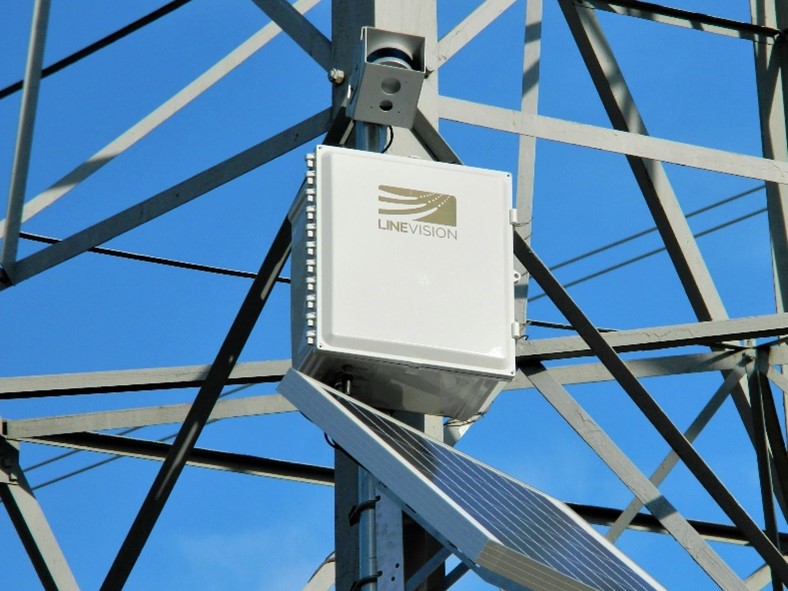The energy transition is trying to fit a square peg into a round hole—variable, renewable generation into a grid built for thermal generators. To stop climate change, we must adapt this system as cost-effectively and as quickly as possible to deliver variable generation, often from far-flung sunny and windy regions, to load centers.

Jay Caspary
Grid-Enhancing technologies (GETs) increase the capacity and flexibility of the electric transmission system. The combined value of dynamic line ratings (DLRs), advanced power flow control, and topology optimization makes the round hole of the transmission system square enough to handle twice as much renewable energy development as it can without GETs. Because GETs reduce congestion charges and renewable power is cheaper than existing fossil generation, this all comes at net cost savings for customers.
GETs work in different ways. Together these technologies can measure the real-time capacity of lines, identify the most efficient system configurations, and ultimately redirect power flow to make the most effective use of the existing transmission system. GETs won’t get us to a decarbonized grid by themselves, but they have an important role to play—so important that after 40 years in the transmission industry, it is one of my top priorities to see these tools deployed widely.
GETs Applications
In the short term, GETs will flip a switch on our grid. Going from static line ratings and limited control over scale and direction of power flow, to real-time transmission capacity information and an increasingly responsive system, will uncover massive under-utilized grid capacity. National Grid in UK is expecting to install 1.5 GW of new renewable energy generation based on capacity unlocked by Smart Wires advanced power flow control devices. Topology optimization models for the Southwest Power Pool suggest that with their use, renewables would see more favorable dispatch, and customers would have access to cheaper power. Further demonstrations are ongoing in New York state. New York’s National Grid and NYPA have deployed DLR systems, adding capacity to existing lines to enable the movement of more green energy from generation sources upstate to the demand downstate.

A LineVision DLR system installed in New York’s Hudson Valley. Image Credit: LineVision
In the long term, GETs will help us plan and operate the infrastructure we need for a decarbonized grid. With any new transmission line, and with new generation turning on and old plants retiring, the grid topology will change. GETs can help planners and operators respond to these changes and help mitigate disruptions. For instance, GETs can be deployed temporarily to resolve congestion while a new transmission line is built, and then later redeployed in another area where another new renewable energy project is facing regular curtailment.
While there are no silver bullets for the energy transition, GETs (including the aesthetically bullet-like DLR sensors pictured below) have some shiny-grey, ball-shaped characteristics—and they are fast to deploy.

Not a silver bullet? DLR sensor. Image Credit: Heimdall Power
Getting GETs Deployed
Why aren’t more GETs on the wires and at the substations yet? The answer is primarily a misalignment of incentives for transmission asset owners—GETs installations are typically low-cost, high-impact projects that transmission owners are not encouraged to deploy under cost-of-service ratemaking. The Working for Advanced Transmission Technologies (WATT) Coalition is a trade association of GETs technology providers, utilities and renewable energy developers working on this problem. A promising concept to correct this lack of deployment incentive issue is under consideration by the Federal Energy Regulatory Commission (FERC docket RM20-10-000). A shared savings incentive, whereby solution proposers would be compensated based on the system benefit of their GETs deployment, is being discussed. The shared-savings proposal would fit neatly into system operator economic project evaluation processes, leading to deployments with significant customer benefits from reduced congestion costs and more flexible, resilient networks.
The WATT Coalition is confident that the shared-savings approach would lead to many high-value deployments, because GETs are also useful in other contexts. One of these is faster renewable energy interconnection. Ninety commenters on FERC’s transmission and interconnection Advance Notice of Proposed Rulemaking indicated their agreement for GETs to be considered in those processes.
Without moving poles and wires or waiting years to see new lines built, GETs help enable an electrical reshaping of the grid for a clean energy future. Their optimal deployment isn’t as simple as dropping a DLR sensor on every line, or a power-flow controller at every substation. Using GETs to their best system benefit will require engineers to develop a strong understanding of their uses and leadership to embrace dedicated evaluation of these proven technologies. Incentive reform will help get the ball rolling on ratepayer savings, while GETs evaluation in interconnection planning will dramatically improve our ability to rapidly and reliably connect new renewables. This is a win-win situation all around.
Jay Caspary
Vice President, Grid Strategies

GETs can be useful in temporarily solving congestion and resulting curtailment due to lack of transmission capacity. However, most curtailment is due to low load in comparison to generation. DLR can sometimes help increase the delivery of wind energy when there is overgeneration in one area and high load in adjacent areas, but not enough transmission capacity to get the energy to the load. DLR is not generally useful in hot summertime conditions when summer peak load needs more generation. DLR may actually derate transmission in hot conditions. Be aware that some anti-renewable and pro distributed energy groups are pushing ATTs in place of needed new transmission. ATTs are useful in special cases, not in place of new bulk transmission to deliver renewable energy to load centers. Utilities need to carefully assess ATTs where there is congestion, but have no misconceptions about the need for new transmission lines. Both have their place.